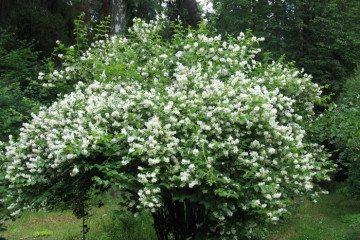How to prune a daylily after flowering
Content:
Daylily pruning is carried out in the spring, fall, or before wintering. It is done so that the plant spends energy on the necessary functions by minimizing losses for the growth of extra leaves and stems.
Daylily flowering period
Daylily blooms from late June to early August. The flowering time depends on the variety. Modern daylily varieties suggest multiple flowering. After the first wave, they shoot arrows. Adult plants give up to 20-30 inflorescences per season, each of which blooms up to 20 flowers.
Trim or not?
Before wintering, it is worth deciding how to cut the daylily after flowering. There is no definite answer. Many gardeners are wondering whether it is necessary to prune the daylily after flowering? Some people think that it is not necessary. The root system of the plant can survive perfectly in winter, and the trimmed leaves remain until spring. This does not have a significant impact on the quality of wintering shrubs, which is why each grower individually decides whether to cut the leaves of the daylily in the fall.
Supporters of a different point of view believe that the plant should be sent to winter without leaves. It is assumed that green clots continue to provide plants with nutrients: at the beginning of cold weather, the outflow of trace elements and sugar from the leaves to the tubers increases. At the same time, if the dried leaves cannot be removed in spring, the daylily can easily infect the root collar.
When to prune after flowering?
Daylily has faded, what to do next? They should be processed before frost or after the first frost. In this case, only young leaves are left. It is impossible to prune at an earlier date, since there is a possibility that the leaves will begin to grow during warming - dormant buds may wake up. Cropping will be completely useless.
How to trim properly
Pruning daylilies is a selective process that depends on the condition and development of the plants. After the last buds have opened and disappeared, they are used to cut through the lower pedicels. The delay in this case is unacceptable. How to trim a daylily if it rains?
In the spring, old leaves are trimmed around the edges to cleanse the bottom of the curtain and stimulate its rejuvenation. Throughout the summer, they take care not only of the inflorescence and pedicel, but also cut the yellow leaves at the base of the flower.
Winter pruning is a moot point: if the leaves turn yellow and dry naturally, they can be used as an additional measure of protection. In the central part of Russia, the daylily has faded, what to do? Plants often fall off before completing the growing season. After frost, the leaves die off. In this case, the entire aerial part of the plant is treated before frost due to the fact that it is difficult to carry out a uniform pruning of wet leaves.
Young leaves have time to grow and bloom before winter, but they are never removed or cut off.They are left on plants to prevent yellowing in milder climates.
Pruning a daylily in the fall is usually straightforward:
- Use a sharp pruner or scissors to cut off all the leaves 10-15 cm above the ground.
- Do not prune too much, as this will stimulate the plant to regrow.
- The entire leaf is cut or composted on the site and burned after discovering the flower.
Care after pruning
After pruning in the spring, the plant must be properly cared for. First of all, fertilizers and feeding are used to obtain the required amount of nutrients. In the autumn, special operations are carried out before wintering.
Do I need to cover the daylily in winter
In winter, most perennial flowers are covered, but the daylily is a plant with high frost resistance, which usually does not need shelter. Snow is protection for many perennial plants. But if the climate in the growing region is characterized by stable frosts and a minimum amount of snow, the daylily should still be isolated. When flower seedlings are planted in the fall, a shelter is required. The reason is the lack of adequate time to adapt to new environmental conditions.
How to shelter for the winter
It is usually sufficient to cover the day lily with a layer of mulch (5-8 cm). It is allowed to use a layer of straw, dry leaves, rotten wood chips. If stronger cover is required, spruce branches are placed on top of the mulch. The flower is also covered with non-woven insulating material.
Daylily is a hardy flower crop that needs preparation for wintering. If the rules for pruning and sheltering are not followed, the plant will not fully develop, and sometimes it may even die from diseases and cold weather.



















